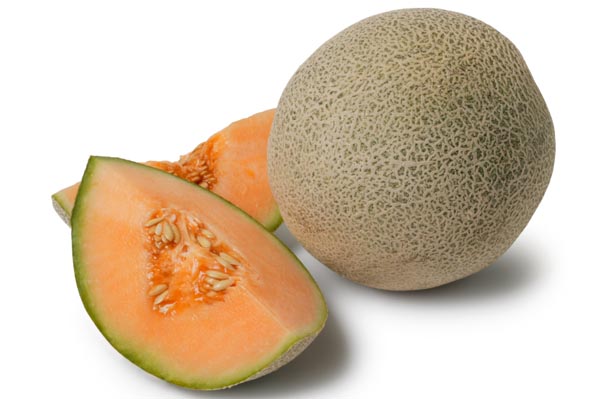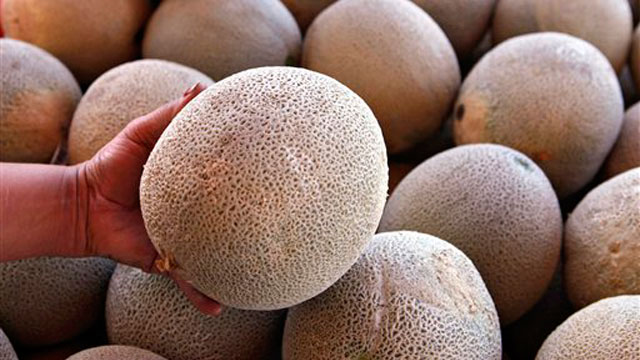With 84 people confirmed sick from listeria in cantaloupe, including 15 deaths, some basic questions remain: where did the listeria come from, why was there so much that it affected so many people, and how did the listeria come into contact with the cantaloupe at Jensen Farms in Colorado?
Elizabeth Weise of USA Today writes that cantaloupe growers, packers and sellers are not unanimous in deciding the best way to reduce the risk of listeria contamination on cantaloupes.
"There are lots of places for bacteria to bind on the surface. It’s like a mountain range under the microscope," says Doug Powell, a professor of food safety at Kansas State University, Manhattan.  But there’s not much consumers can do. If the listeria is on the rind, when you cut it open "it’s going to cross-contaminate."
But there’s not much consumers can do. If the listeria is on the rind, when you cut it open "it’s going to cross-contaminate."
About 85% of cantaloupe grown in the U.S.come from California and Arizona’s arid high deserts, where they’re watered using drip irrigation, which keeps them relatively clean. That means they don’t need to be washed before being shipped, which experts say cuts down on the possibility of one contaminated melon tainting a whole vat of them as they’re being washed.
The other 15% are grown in the South, where rain is more likely to splatter them with mud and make them impossible to sell without washing. In the winter season, November through April, cantaloupe come from Mexico and Central America, where they’re also more likely to get wet.
Bringing cantaloupes into a packing shed, where they touch surfaces that have touched other melons and may be dunked in a tank of water to clean them, "has every opportunity to reduce risk, but equal or greater opportunity to contaminate," says Trevor Suslow, a food safety expert at the University of California, Davis, who has done extensive research on cantaloupes.
Washing "is certainly a good practice, but you need to do that in an area that you won’t introduce contamination" into other melons.
Listeria is an especially problematic bacteria because it exists in the environment, in dirt and animals; once a colony starts growing on processing equipment, it can form biofilms that are difficult to remove. "They hide in the nooks and crannies," says Suslow. "You’ve got to go in with steam and stronger chemicals" to get rid of them.
Craig Wilson, Costco’s food safety director, says his company does require sellers to wash their cantaloupes, but what he’s really moving toward "in the very near future" is a test-and-hold  program. Growers and packers that want to sell him melons will need to test them for a broad range of potential pathogens such as "E. coli, salmonella, listeria," and not ship to him until the results come back negative, a process that takes between eight and 48 hours.
program. Growers and packers that want to sell him melons will need to test them for a broad range of potential pathogens such as "E. coli, salmonella, listeria," and not ship to him until the results come back negative, a process that takes between eight and 48 hours.
"This not a bad industry, it’s a good industry," Wilson says. "The cantaloupe folks are great, we just need to work together to get beyond this."
A table of cantaloupe- (or rock melon) related outbreaks is available at http://bites.ksu.edu/cantaloupe-related-outbreaks.
